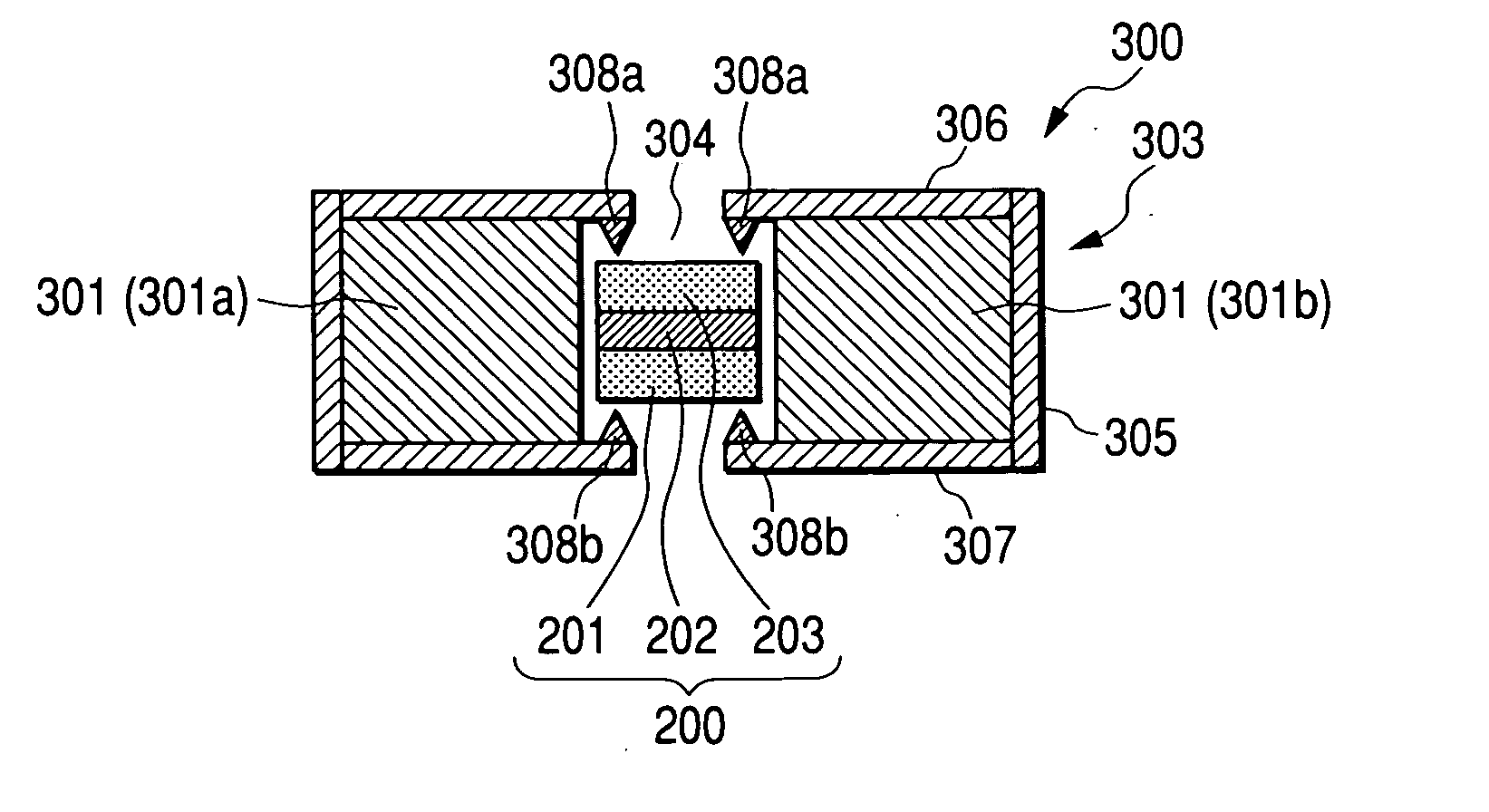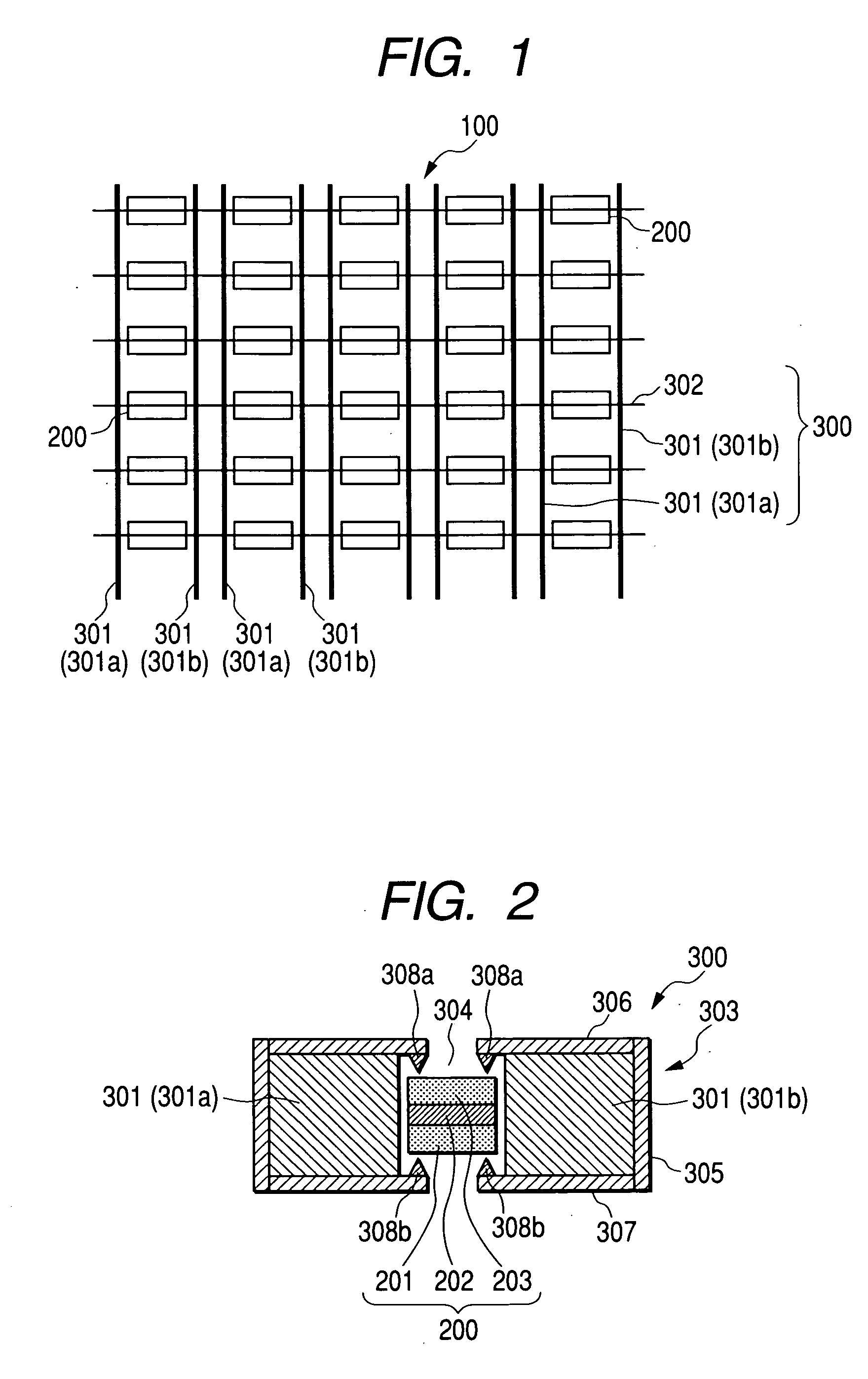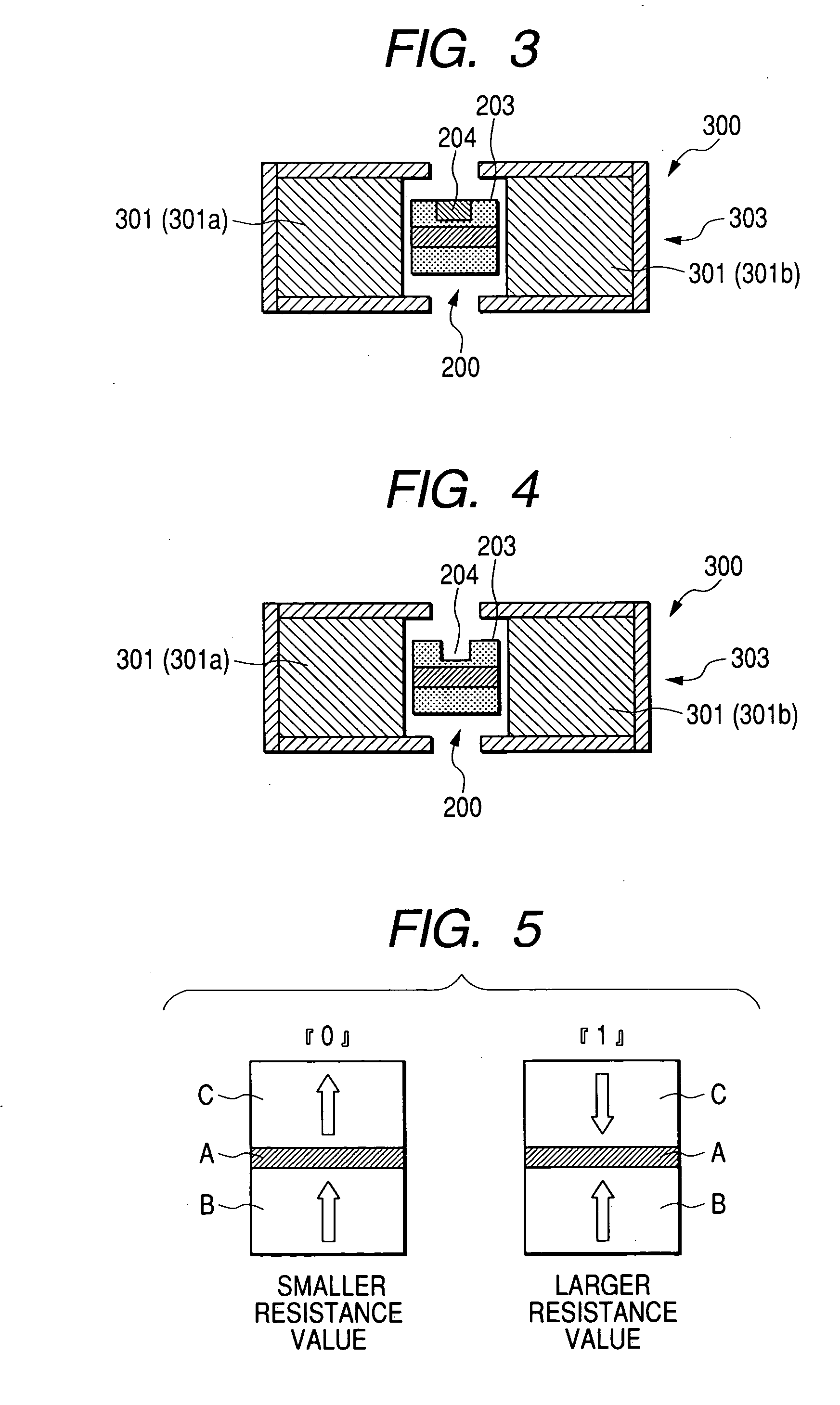Magnetic film, multilayer magnetic film, method and mechanism of magnetization inversion of magnetic film, and magnetic random access memory
a multi-layer magnetic film and random access memory technology, applied in the field of magnetic film, multi-layer magnetic film, method and mechanism of magnetization inversion of magnetic film, and magnetic random access memory, can solve the problems of inability to hold information, inability to achieve sufficient improvement of recording density, and inability to reduce the size of memory elements
- Summary
- Abstract
- Description
- Claims
- Application Information
AI Technical Summary
Benefits of technology
Problems solved by technology
Method used
Image
Examples
first embodiment
[0021] (First Embodiment)
[0022] An example of the magnetic random access memory according to a most preferred embodiment of the invention is explained in detail with reference to FIGS. 1 and 2. FIG. 1 is a schematic diagram showing a basic configuration of a MRAM 100. FIG. 2 is an enlarged view schematically showing a memory element 200 and a magnetization inversion mechanism 300 making up the MRAM 100.
[0023] The MRAM 100 includes an interlayer insulating film formed on a semiconductor substrate, not depicted therein, making up a transistor structure. The interlayer insulating film has formed therein, in grid form, a multiplicity of memory elements 200 and a magnetization inversion mechanism 300 functioning as means for writing and reading information into and from each memory element. A write line constituting a magnetization inversion mechanism, which is arranged on both sides of each memory element in the drawings, may alternatively be arranged only on one side thereof.
[0024] E...
second embodiment
[0031] (Second Embodiment)
[0032] A magnetic random access memory according to another most preferred embodiment of the invention is explained with reference to FIG. 3. FIG. 3 is an enlarged view schematically showing the memory element 200 and the magnetic flux reversal mechanism 300 making up the magnetic random access memory.
[0033] The memory element 200 and the magnetic flux reversal mechanism 300 making up the magnetic random access memory have the same basic configuration as the corresponding component parts shown in FIGS. 1 and 2. Therefore, the same component parts as those shown in FIGS. 1 and 2 are designated by the same reference numerals, respectively, in FIG. 3.
[0034] The second magnetic film 203 of the memory element 200 is locally formed to have a portion (easily magnetized section 204) magnetized more easily than the other portions. This easily magnetized section 204 is where the vertical magnetic anisotropy is reduced by changing the film structure of a part of the...
third embodiment
[0039] (Third Embodiment)
[0040] A method of magnetization inversion of the magnetic film according to a third embodiment is explained. Normally, a uniform magnetic field is applied from the write lines for the magnetic flux reversal of the magnetic film of the MRAM. According to this embodiment, in contrast, the magnetic field is applied to the whole of the magnetic film, while at the same time applying a stronger magnetic field than the above-mentioned magnetic field to a part of the magnetic film thereby to magnetize the magnetic film in the same direction as the direction of the stronger magnetic field. This method makes it possible to save power without increasing the size of the cell structure in the magnetization inversion method for the MRAM. This configuration can be implemented either by appropriately designing the magnetic field application mechanism explained in the first embodiment or by locally processing the magnetic film. Also, this method is applicable to both the ve...
PUM
 Login to View More
Login to View More Abstract
Description
Claims
Application Information
 Login to View More
Login to View More - R&D
- Intellectual Property
- Life Sciences
- Materials
- Tech Scout
- Unparalleled Data Quality
- Higher Quality Content
- 60% Fewer Hallucinations
Browse by: Latest US Patents, China's latest patents, Technical Efficacy Thesaurus, Application Domain, Technology Topic, Popular Technical Reports.
© 2025 PatSnap. All rights reserved.Legal|Privacy policy|Modern Slavery Act Transparency Statement|Sitemap|About US| Contact US: help@patsnap.com



